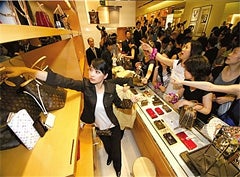“
“
“
“
The roll-call of fashion designers raising their profiles in China over the past few years reads like a Who’s Who of contemporary couture greats, from veteran designer Karl Lagerfeld of Chanel to Miuccia Prada of the fashion house that bears her name to Burberry's creative wunderkind Christopher Bailey. The visits are confirmation that the world's top luxury fashion brands see China as one of the most important growing markets. But they have their work cut out if they want to win the wallets of China's high-end shoppers.

“
“
“
“
Sign up to stay informed about our latest article releases.